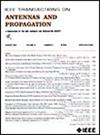具有任意接收阵列的SIMO-EGG系统水下无线光传播信道建模与分析
IF 5.8
1区 计算机科学
Q1 ENGINEERING, ELECTRICAL & ELECTRONIC
引用次数: 0
摘要
我们引入了一个$ N $段($\text {PG-BSF}_{N}$)的分段高斯波束扩展函数来表征单输入多输出(SIMO)水下无线光通信(UWOC)系统中的光传播通道,特别关注涉及各种几何形状接收器阵列的场景。该模型采用分段高斯函数灵活地描述了不同几何形状的光束与接收机阵列之间的空间关系。该方法能够有效地捕捉到接收机阵列间的空间差异及其对系统性能的影响。与蒙特卡罗(MC)仿真的比较表明,$\text {PG-BSF}_{N}$模型在预测系统性能(如中断概率(OP)和平均误码率(ABER))时,在不同水质、接收器的抖振水平和独立的非同分布接收器的配置)方面具有很高的一致性,从而验证了其在复杂条件下的鲁棒性和准确性。在OP方面,$\text {PG-BSF}_{N}$模型显著优于传统的Beer-Lambert (BL)模型,在严重的接收机抖动下,差异达到数十dB。这些发现对于高效精确地设计水下物联网(UIoT)的物理层和网络层算法至关重要。本文章由计算机程序翻译,如有差异,请以英文原文为准。
Modeling and Analysis of Underwater Wireless Optical Propagation Channels in SIMO-EGG Systems With Arbitrary Receiver Array Geometries
We introduce a piecewise Gaussian beam spread function with $ N $ segments ( $\text {PG-BSF}_{N}$ ) to characterize the optical propagation channels in single-input multiple-output (SIMO) underwater wireless optical communication (UWOC) systems, with a particular focus on scenarios involving receiver array of various geometries. This model employs a piecewise Gaussian function to flexibly describe the spatial relationship between the optical beam and receiver array of various geometries. It is highly effective in capturing the spatial differences among the receiver array and their impact on system performance when receivers are independent and nonidentically distributed. Comparisons with Monte Carlo (MC) simulations demonstrate that the $\text {PG-BSF}_{N}$ model achieves high consistency in predicting system performance, such as outage probability (OP) and average bit error rate (ABER), across different water qualities, receiver jitter levels, and configurations of independent nonidentically distributed receivers, thereby verifying its robustness and accuracy under complex conditions. In terms of OP, the $\text {PG-BSF}_{N}$ model significantly outperforms the traditional Beer-Lambert (BL) model, with differences reaching tens of dB under severe receiver jitter. These findings are crucial for the efficient and precise design of physical and network layer algorithms for the underwater Internet of Things (UIoT).
求助全文
通过发布文献求助,成功后即可免费获取论文全文。
去求助
来源期刊
CiteScore
10.40
自引率
28.10%
发文量
968
审稿时长
4.7 months
期刊介绍:
IEEE Transactions on Antennas and Propagation includes theoretical and experimental advances in antennas, including design and development, and in the propagation of electromagnetic waves, including scattering, diffraction, and interaction with continuous media; and applications pertaining to antennas and propagation, such as remote sensing, applied optics, and millimeter and submillimeter wave techniques

 求助内容:
求助内容: 应助结果提醒方式:
应助结果提醒方式:


